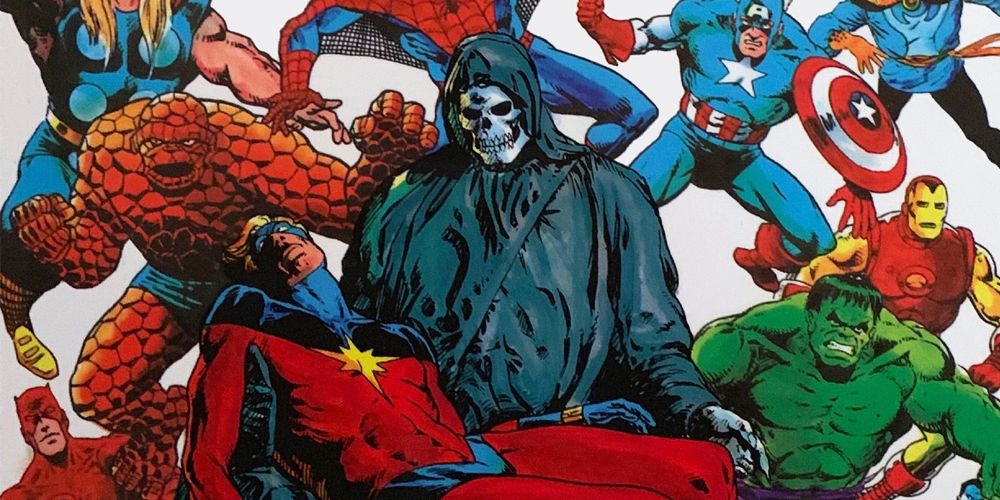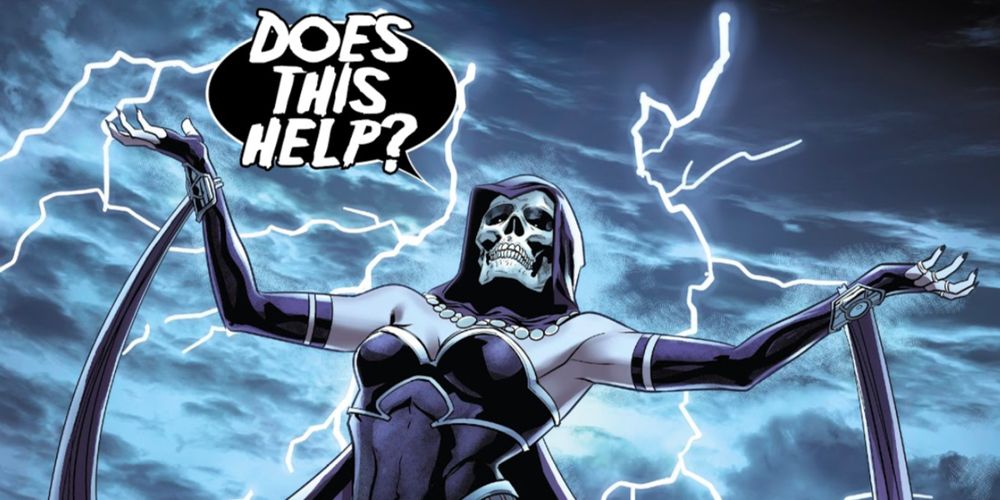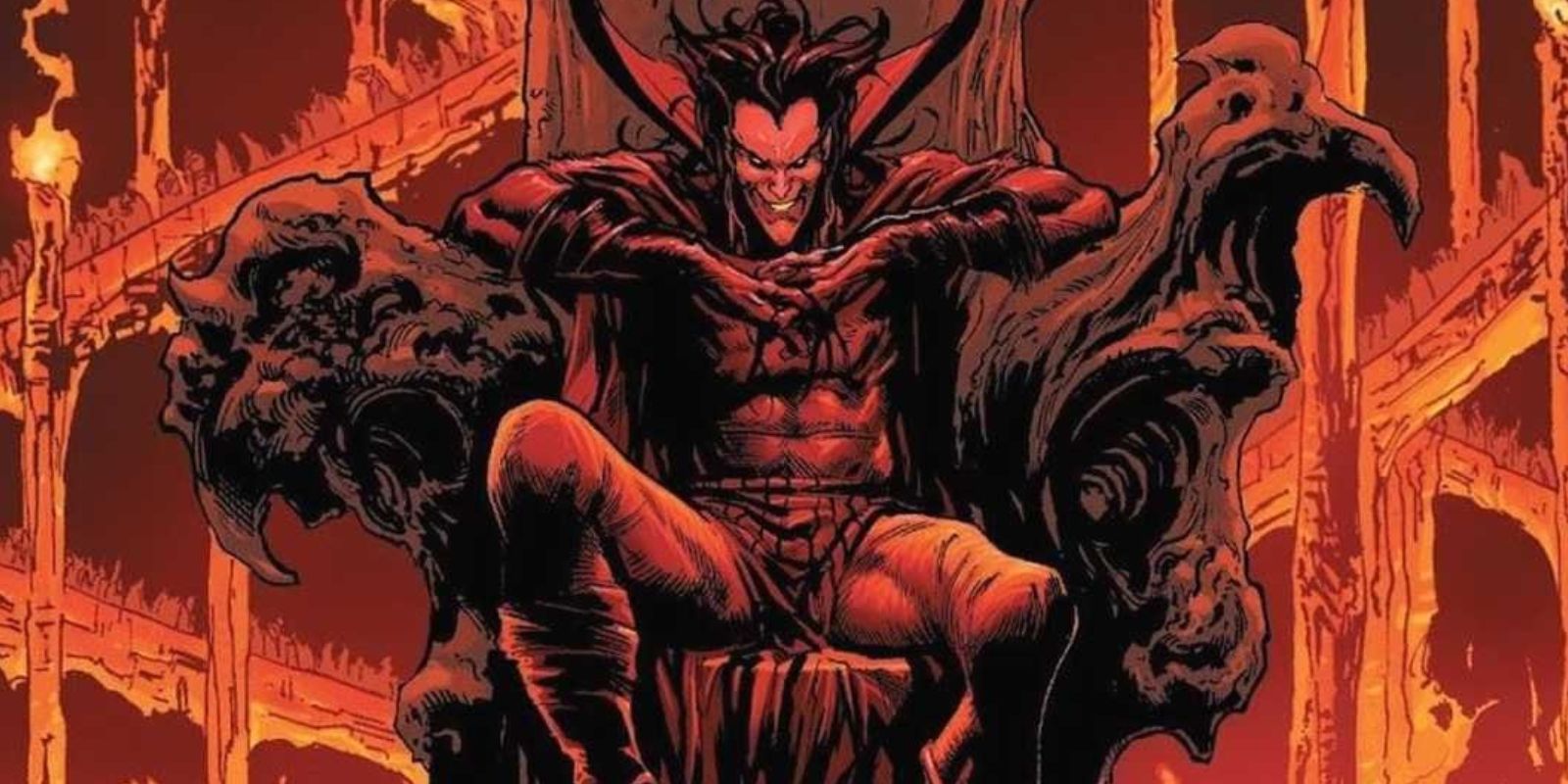Death is familiar territory for the heroes of Marvel Comics, as many of them have died, some even multiple times. The death trope is mostly a revolving door for those who spend their lives in colored spandex, with most heroes finding a strange or unexplainable way to come back from beyond the void. This has caused death to often be viewed as nothing more than a temporary roadblock for whichever hero has recently kicked the bucket. But that still leaves the question of what happened to them while they were gone. The Marvel Universe is a place of endless possibilities and is not exclusive to the living. Death is simply the start of another adventure.
Death is a complex and fluid subject in the main Marvel continuity - as both a concept and a character. The soul has been confirmed to be real on multiple occasions, and it is known that it continues on into a form of afterlife. But beyond that, there are many possibilities and few concrete answers.
The Marvel universe was born in a Big Bang style event. In the echoes of that explosion, several abstract cosmic beings took shape, including Master Order, Lord Chaos, Eternity (the essence of life), and Death. These beings answer only to the Living Tribunal, who in turn is connected to the One-Above-All, the assumed creator of the universe. These beings operate on a nigh unknowable level, their motives, and actions too complex for mortals to grasp.
The cosmic being known as Death is the essence of mortality -- it is neither good nor evil, it is merely the force that quells life and brings an end to all things. As such, Death needs life in order to exist and seemingly has to maintain a balance with its sibling Eternity, so as not to become meaningless and fade from existence. While her role is often viewed in a sinister light, Death provides an essential function within the Marvel world - creating space for all the new life that Eternity provides.
Like many of the other concepts within the Marvel Universe, Death can and does take on a physical form. The entity's preferred appearance is that of a female skeleton dressed in a hooded, black gown. Death has taken a direct hand in the events of the universe using this form and others. The being has even gone so far as to establish relationships with several select individuals, including Deadpool and Thanos. Both characters have a deep love for the abstract being and have gone to great lengths to be with it.
But what waits in store for those who meet Mistress Death? Well, this seems to largely be based on what an individual believes during their time on Earth. Gods in the Marvel Universe are not a contentious subject - they are real, and they hold great sway over the final fate of a human soul.
Gods are complex beings, born from a mixture of cosmic power and human belief. In the days when the Earth was young, a primeval life force named the Demiurge seeded the planet with life and gave rise to the Elder Gods, the first beings ever to inhabit the world. Most of these beings fell into darkness, becoming wicked, demonic creatures. Because of their cruel nature, they were targeted and felled by Atum, the godly son of the Demiurge and the Earth Mother, Gaea. Atum then went on to fuse with the Sun, an act that once again seeded the Earth with “godstuff.”
This “godstuff” was eventually manipulated by the conscious and subconscious beliefs of humankind. This potent combination led to the birth of all of earth's various pantheons and the planes of existence in which they reside. The single-issue encyclopedia titled Thor and Hercules: Encyclopædia Mythologica #1 (by Anthony Flamini, Greg Pak, Kevin Sharpe, and Mario Gully) details a great many of these godly families, including but not limited to the Olympian, Egyptian, Chinese, Hindu, African and of course Asgardian gods.
Each of these pantheons maintains its own realm and potentially its own afterlife. A prominent example of this in the universe is the afterlife known as Valhalla. Odin father of the Asgardian Thunder God turned Avenger named Thor, maintains a hall of the dead. It is there that the souls of those who honor the Asgardian gods and die heroically in battle are welcomed to come to fight, feast, and drink until the coming of Ragnarök, the end of days.
Another prominent afterlife was seen when the Fantastic Four member known as the Thing fell in battle against Doctor Doom. The hero wound up in Heaven, complete with angels and golden gates. He was offered a paradise but was soon returned to Earth when the rest of the Fantastic Four entered the realm and convinced him that it was not yet time for him to die. The team even meets a being that claims to be the Creator himself.
A particular kind of afterlife is reserved for those souls with a more vile nature. “Hell” in the Marvel universe is actually a catch-all term for a broad spectrum of realities, each of them featuring a unique flavor of eternal damnation. The recent Ghost Rider (2019-2020) #1 (by Ed Brisson and Aaron Kuder) reveals an exhaustive look at the various afterlives that someone with a wicked soul may encounter. The most classical depiction of the concept is the realm of Mephisto. This version is a land of fire and brimstone where demons vie for power by torturing wicked souls. Then there is Niflheim, the frozen wasteland that serves as the repository for the souls of those that honored the Norse gods but did not die in battle, this place will sometimes even house the souls of the Asgardian gods themselves. There is also the Dark Dimension, a place ruled by Doctor Strange’s longtime enemy, Dormammu and many more. Each of these locations may serve as the final resting place for those who lived an evil life.
There is a place beyond all of these afterlives as well, far past the concepts of gods and morality -- the truest great beyond known as the Far Shore. Recently Jane Foster, now guiding the dead in her role as Valkyrie, helped the Asgardian god Heimdall to reach this place. This is the home of eternal mystery, and no living soul knows what may lie beyond. While death may often be seen as a bit of a joke in the world of Marvel’s heroes, it is still a fascinating subject. Between the concept of death itself and the various afterlives ruled by the gods, there is endless material to be mined from Marvel's great beyond. And it’s always a sure bet that some costumed hero will end up there soon.




_from_Mighty_Thor_Vol_1_706_001.jpg)
